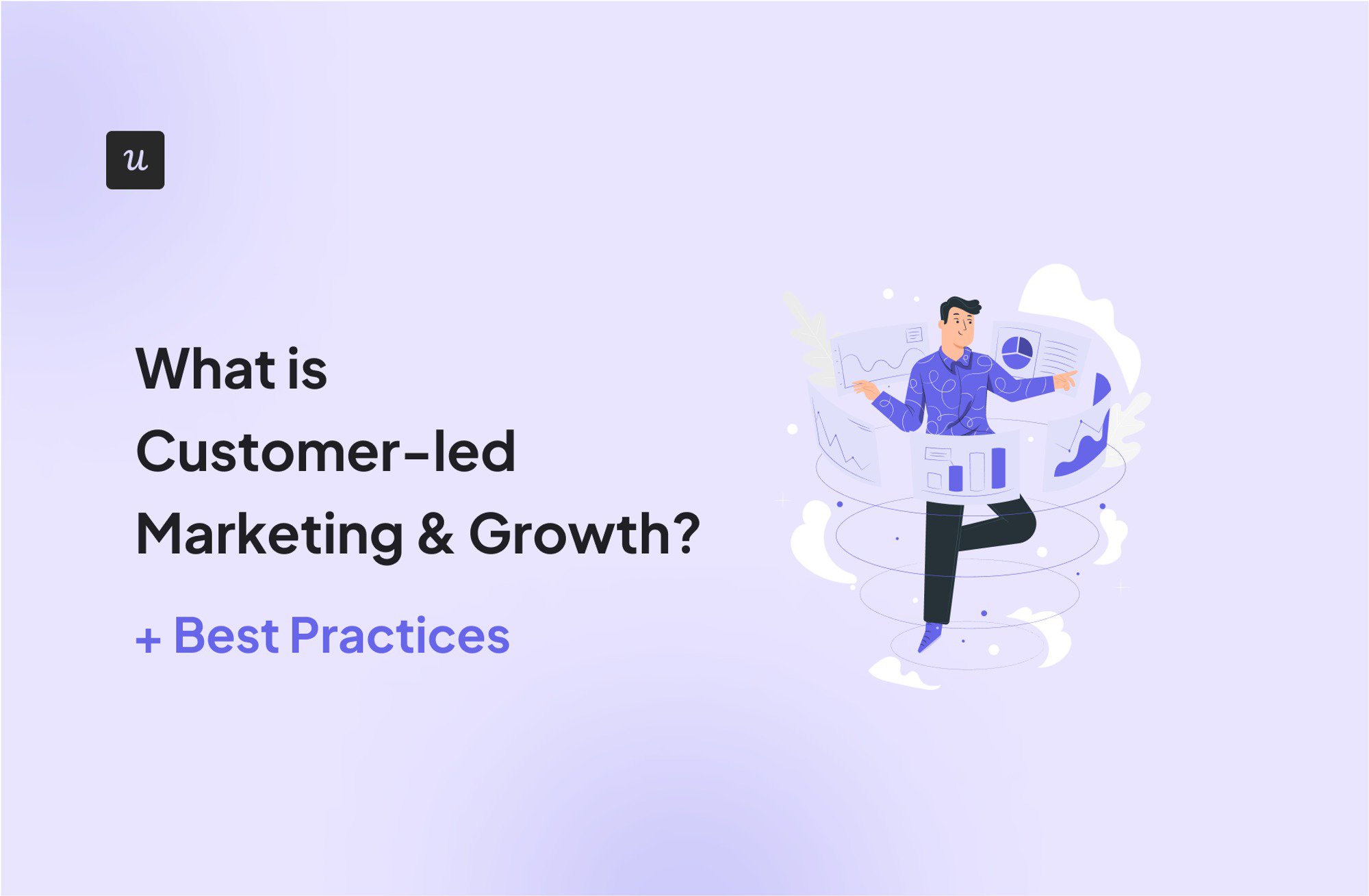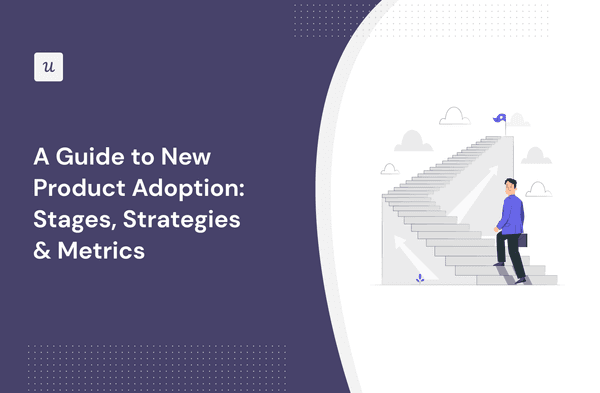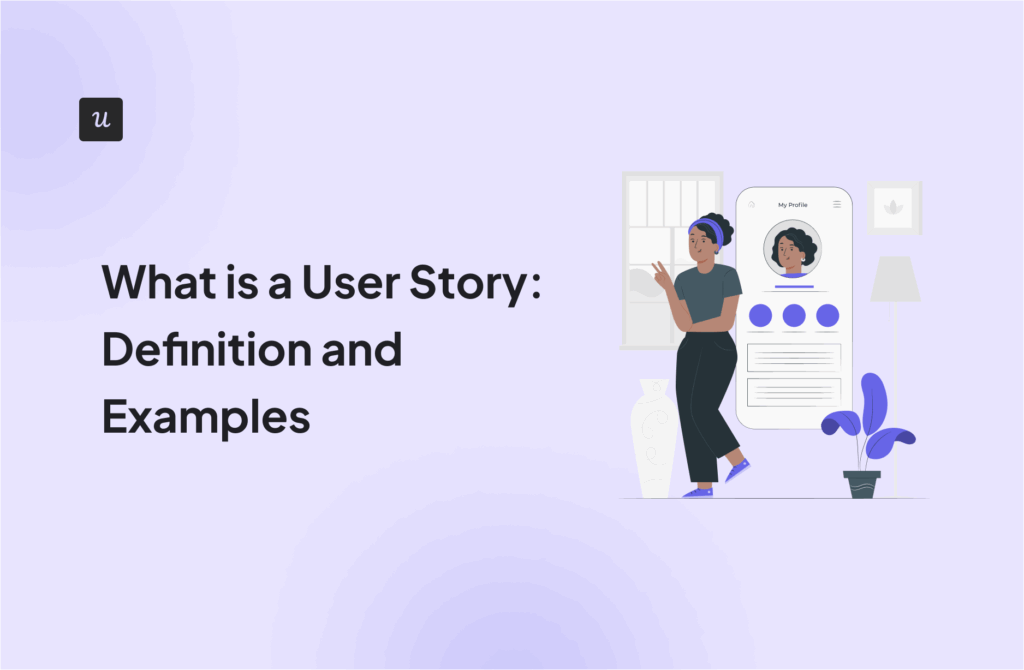
Think of your favorite coffee shop. It’s not just the aroma of freshly brewed coffee that keeps you coming back—it’s the way the barista greets you with a smile, knows your usual order, and even suggests new blends based on your tastes. This personal touch turns each visit into an experience rather than a transaction.
Now, imagine applying this level of understanding and customization to your marketing strategy. A customer-led marketing strategy is about transforming your approach to reflect the same level of personalization. In this article, we’ll explore how placing your customers’ needs and feedback at the heart of your strategy can help you engage users and keep them coming back.
Try Userpilot Now
See Why 1,000+ Teams Choose Userpilot

What is customer-led marketing?
Customer-led marketing puts your customers’ needs and preferences at the center of all marketing efforts. This marketing strategy involves collecting customer feedback and behavior data and using those insights to deliver more personalized experiences.
What is customer-led growth?
Customer-led growth is a strategic approach that involves using qualitative and quantitative customer insights to drive overall business growth, including customer acquisition, product development, and retention.
Product-led growth vs customer-led growth
Product-led growth uses the product itself as the primary driver of growth. The product is designed to be so compelling and user-friendly that it attracts and grows the customer base through its inherent value.
On the other hand, customer-led growth uses customer insights and feedback to drive growth across all business functions, including marketing, product development, and sales.
If you want to skyrocket product growth, consider using a combination of customer-led and product-led strategies.
Benefits of a customer-led growth strategy
With an emphasis on user satisfaction, a customer-led strategy offers several benefits. These include:
- Increased customer loyalty and retention—When you collect feedback from users and improve your product based on these insights, it makes them feel valued and improves retention rates and customer loyalty.
- Better marketing ROI—Instead of creating one-size-fits-all marketing campaigns, a customer-led growth strategy focuses on delivering personalized experiences based on user feedback. It helps your messaging resonate better with new and potential users and ultimately improves marketing strategy ROI.
- Improved customer engagement—With customer-led growth, you focus on enhancing the user experience based on feedback and in-app behavior data. It helps customers realize their goals with your product and skyrockets engagement rates.
5 best practices for your customer-led growth strategy
Do you want to build a customer experience management strategy to drive product growth and revenue? Here are a few tips to help you gain a competitive advantage with customer-led growth:
1. Talk with your customers to understand their language and pain points
How do you learn more about what your customers want and the challenges they face? The best way is to hear about user needs and pain points from them.
A simple in-app prompt encouraging users to book a one-on-one interview with your team can be a good start. Make sure you use the session to dig deeper into their needs and expectations.
The key is to ask the right questions. Here are a few examples:
- How easily do you manage to complete <task> using our tool?
- If you could change one thing about our platform, what would it be?
- What feature enhancements will motivate you to use our product more often?
- What features of our platform do you use most often?
Take things up a notch by offering an incentive, such as a gift voucher or discount code, to entice more users to interact with your team.

2. Focus on how your product can improve your customers’ lives
Product teams are often busy trying to crack the next “big” feature that’ll sweep users off their feet. But here’s the thing—even with the most remarkable and unique features, your product can struggle to drive customer success and retain users if they don’t see value in these features.
Therefore, any new features or enhancements you introduce must address real customer pain points. The FAB model can help you with this. You can put each feature through a filter of advantages and benefits and then communicate the same to your users.
It’s also a good idea to launch feature request surveys at various stages of the customer lifecycle. This will offer in-depth insights into what matters the most to users and help guide product development decisions.

3. Provide a fantastic customer experience
This one’s a no-brainer. The key to achieving customer-led growth is to delight every user with a flawless experience.
How do you create an experience tailored to a user’s unique needs? The answer is personalization.
Start by segmenting users based on shared demographics, behavior, preferences, and other parameters. Then, create hyper-targeted in-app flows addressing each segment’s pain points and needs.
For instance, you can welcome new users with a survey that asks them to select their designation at work. Next, you can recommend the most relevant features and help center resources based on their responses to deliver a personalized onboarding experience.

4. Create educational content to help customers get the most out of your product
If you want users to derive the maximum value of your product, educational content is the way to go.
Content formats, such as e-books, tutorials, and webinars, help users understand how they can use various features to accomplish their tasks. They’re equally valuable for familiarizing users with advanced features and best practices.
For example, you can conduct product-related webinars based on different segments’ pain points to facilitate real-time interaction with users. Product growth tools allow you to send webinar invitations to relevant users in-app based on their behavior.

5. Improve customer experience based on customer feedback
A customer-led growth strategy needs continuous iterations. The idea is to adapt your product and customer experience according to changing customer needs.
The best way of doing that is to collect feedback from users with in-app surveys. You can use various types of surveys, such as Net Promoter Score (NPS), Customer Effort Score (CES), and customer satisfaction surveys.
Besides asking for numerical or star ratings, you can ask follow-up, open-ended questions to collect in-depth qualitative feedback.
Also, make sure you run these surveys at the right moments in the user journey. For instance, you can ask users for their feedback right after they complete an onboarding session or try a new feature. Similarly, you can launch a survey when a user completes the free trial or requests to cancel their subscription.

How can Userpilot help you implement a customer-led approach?
As a product growth platform, Userpilot offers several features to achieve customer-led growth. You can:
Personalize user experience to improve customer satisfaction
With Userpilot, you can segment customers based on their in-app behavior. It allows you to create personalized onboarding flows depending on how each user navigates your product. That, in turn, creates an experience tailored to their unique needs.

Similarly, you can trigger personalized in-app flows based on survey responses. For example, you can launch a modal asking your positive feedback providers to leave a review on third-party sites such as G2 so you can drive word-of-mouth marketing.

Automatically capture in-app interactions to understand the customer journey
Userpilot’s autocapture feature lets you capture key user interactions without manually tagging them or waiting on developers.

Our autocapture functionality eliminates the need to decide when and what events to track. The platform automatically tracks clicks, form submissions, and text inputs. Based on this data, you can segment customers and automatically trigger flows.

Collect feedback through in-app surveys to understand friction points
Userpilot offers a wide array of customizable templates for in-app surveys. You can choose from NPS, CES, and other templates and edit the questions or create a survey from scratch. It also gives you the option to localize the content.
Also, you can set up branch logic and behavioral triggers for these surveys, which helps personalize the experience further. Once you receive responses, Userpilot helps you analyze them and identify points of friction in the customer experience.

Implement customer-led product development
One of the key benefits of a customer-led approach is that it helps make smarter product development decisions. With Userpilot, you can collect user feedback through in-app surveys and use the responses to guide product teams.
Not only that, Userpilot lets you run A/B tests on in-app flows and user segments. In other words, you can create variations of an in-app flow and launch them for different user segments. Analyzing these A/B test results will help make data-driven product development decisions.

Conclusion
73% of Americans would abandon a brand after just one poor customer experience. We know keeping up with the ever-increasing customer expectations can be overwhelming.
Thankfully, there are product growth tools that make it easy to delight customers. Userpilot allows you to segment users, launch personalized flows, conduct surveys, automatically track key interactions, and A/B test different elements to see what works. Schedule a demo to learn more!







